27
Diclofenac Gel vs. Topical Pain Relief Alternatives: Full Comparison Guide
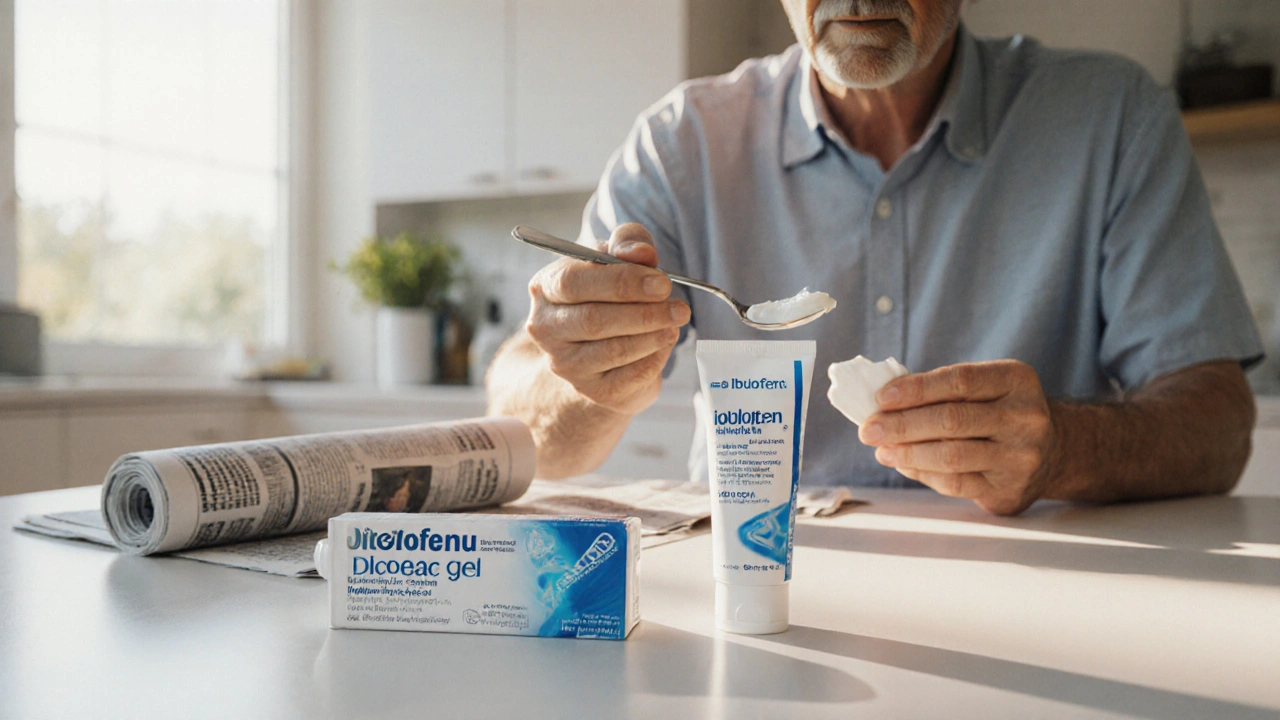
Topical Pain Relief Comparison Tool
Pain Type
Skin Sensitivity
Budget Range
Medical Conditions
Recommended Topical Pain Relief
Diclofenac gel is a topical non‑steroidal anti‑inflammatory drug (NSAID) that contains 1% diclofenac sodium (10mgg⁻¹) and is applied directly to the skin for localized relief of musculoskeletal pain. When you rub it on a sore knee or elbow, it blocks the cyclo‑oxygenase (COX) enzymes right where inflammation lives, sparing the stomach and heart from the systemic exposure of oral NSAIDs. But is it always the best pick? This guide walks through the science, the competition, cost, safety and real‑world tips so you can decide whether Diclofenac gel or another option fits your needs.
How Topical NSAIDs Work
Topical NSAIDs, including Diclofenac gel, act on the same molecular target as their oral cousins: the COX‑1 and COX‑2 enzymes that convert arachidonic acid into prostaglandins, the chemicals that drive pain and swelling. By delivering the drug through the skin, the concentration builds up in the underlying tissues while plasma levels stay low. This localized approach yields a faster onset (often within 30‑45minutes) and a lower risk of gastrointestinal bleeding, hypertension or kidney strain.
Key parameters that shape performance are:
- Skin permeability - influenced by the gel’s base (e.g., propylene glycol, dimethyl sulfoxide).
- Drug potency - diclofenac, ibuprofen, naproxen, ketoprofen each have slightly different COX‑inhibition profiles.
- Target tissue depth - deeper joint pain may need a higher‑strength formulation.
Why Many Choose Diclofenac Gel
Diclofenac has been a workhorse in the NSAID class for decades. Clinical trials in Australia, the UK and the US consistently show that a 1% gel reduces pain scores by 30‑40% compared with placebo for osteoarthritis of the knee, ankle sprains and tendonitis. Its advantages include:
- Rapid onset: pain relief often reported within the first hour.
- Strong COX‑2 selectivity: more effective at curbing inflammation while sparing COX‑1-related gastric protection.
- Convenient dosing: typically 2‑4g applied 3‑4 times daily.
- Regulatory backing: approved by the Australian Therapeutic Goods Administration (TGA) for a wide range of musculoskeletal conditions.
However, it’s not a universal miracle. Some users report skin irritation, especially if they have eczema or apply the gel on broken skin. Cost can also be higher than generic alternatives, particularly when bought over‑the‑counter.
Topical Alternatives on the Market
Below are the most common rivals, each defined with its own microdata tag for easy identification:
- Ibuprofen cream is a topical NSAID containing 5% ibuprofen, used for mild‑to‑moderate muscle and joint pain.
- Naproxen gel is a gel formulation of 0.5% naproxen sodium, marketed for back pain and sports injuries.
- Ketoprofen gel is a 2% ketoprofen topical solution that penetrates deep tissues, often prescribed for severe tendonitis.
- Capsaicin cream is a derived from chili peppers, containing 0.025% to 0.075% capsaicin, which depletes substance P to reduce pain signals.
- Topical steroid cream is a corticosteroid (e.g., 0.1% betamethasone) used for inflammatory skin conditions and occasional joint swelling.
- Lidocaine patch is a adhesive patch delivering 5% lidocaine locally, primarily for post‑herpetic neuralgia and localized neuropathic pain.
Each alternative brings a unique mechanism, side‑effect profile and price point. The following table puts the numbers side‑by‑side.
| Product | Active ingredient & strength | Primary indication | Onset of relief | Typical dosing | Approx. cost (AU$) per tube |
|---|---|---|---|---|---|
| Diclofenac gel | Diclofenac sodium 1% (10mgg⁻¹) | Osteoarthritis, sprains, tendonitis | 30-45min | 2‑4g, 3‑4times daily | 30‑45 |
| Ibuprofen cream | Ibuprofen 5% | Mild‑to‑moderate muscle pain | 45‑60min | 3‑5g, 3times daily | 20‑35 |
| Naproxen gel | Naproxen sodium 0.5% | Back pain, sports injuries | 45‑75min | 2‑3g, 3‑4times daily | 25‑40 |
| Ketoprofen gel | Ketoprofen 2% | Severe tendonitis, bursitis | 30‑50min | 1‑2g, 4times daily | 35‑55 |
| Capsaicin cream | Capsaicin 0.025%‑0.075% | Neuropathic pain, arthritis | 2‑4hours (needs buildup) | 2‑3g, twice daily | 15‑30 |
| Lidocaine patch | Lidocaine 5% | Post‑herpetic neuralgia, localized neuropathy | 15‑30min | One 5cm² patch, up to 12h/day | 50‑70 |
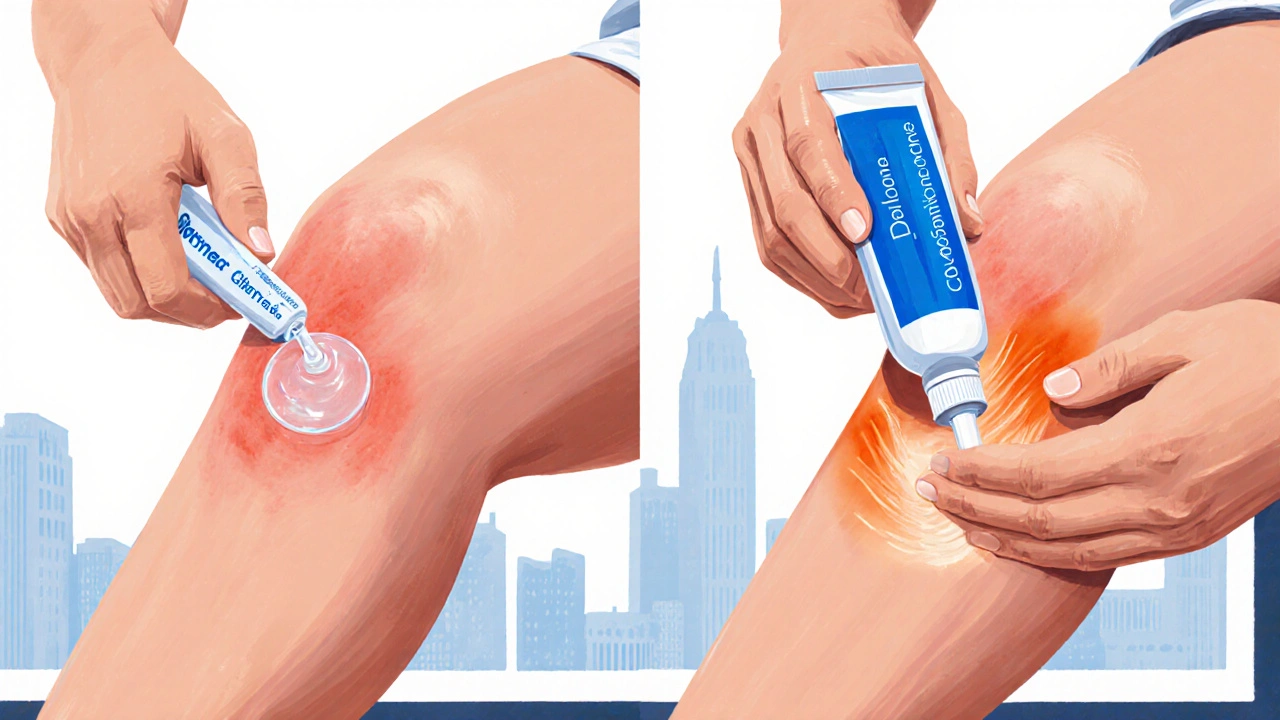
Decision Criteria: Which Product Fits Your Situation?
Choosing the right topical pain reliever boils down to four practical questions:
- What type of pain am I treating? Inflammatory joint pain (e.g., osteoarthritis) responds best to NSAIDs like Diclofenac or Ketoprofen. Neuropathic or burning sensations often need lidocaine or capsaicin.
- Do I have skin sensitivities? Steroid creams can irritate; capsaicin may cause burning; some people react to the alcohol‑based bases in ketoprofen gels.
- What’s my budget? Generic ibuprofen cream is usually cheapest, while lidocaine patches carry a premium.
- Are there drug‑interaction concerns? Even topicals can enter the bloodstream. Patients on anticoagulants, certain antihypertensives, or with liver disease should discuss NSAID use with their physician.
When in doubt, start with the lowest‑risk option (e.g., a small trial of ibuprofen cream) and step up if relief is inadequate.
Practical Tips for Using Diclofenac Gel Safely
- Apply to clean, dry skin: wash the area, pat dry, then spread a thin layer.
- Use the recommended amount: the tube usually includes a measuring cap - 2g covers roughly a 2×2cm area.
- Avoid occlusion: don’t cover the gel with airtight dressings unless instructed, as this can increase systemic absorption.
- Stay clear of eyes and mucous membranes: rinse immediately if accidental contact occurs.
- Watch for skin reactions: redness, itching or a rash that persists beyond 48hours warrants discontinuation and medical review.
- Check interaction warnings: if you are already taking an oral NSAID, combining with Diclofenac gel may raise total exposure.
Potential Side Effects & Regulatory Guidance
While systemic risk is low, the TGA highlights a few rare but serious events linked to topical NSAIDs: gastrointestinal ulceration (especially with extensive use), cardiovascular events in high‑risk patients, and severe skin reactions such as Stevens‑Johnson syndrome. Monitoring guidelines suggest:
- Limit use to 2‑3 weeks without a doctor’s review.
- Document total daily dose - avoid exceeding 12g of Diclofenac gel per day.
- Report any unexplained swelling, shortness of breath, or severe rash immediately.
Related Concepts and Next Steps
Understanding topical pain relief sits inside a broader health‑care picture. After you decide on a gel or cream, consider these complementary actions:
- Oral NSAID stewardship: If you’re already on ibuprofen tablets, your doctor may advise switching to a topical to cut systemic exposure.
- Physiotherapy: Targeted exercises can improve joint stability and reduce reliance on medication.
- Weight management: For osteoarthritis, modest weight loss often yields greater pain relief than any drug.
- Supplements: Glucosamine, chondroitin, or omega‑3 fatty acids may have additive anti‑inflammatory effects.
Future articles could dive deeper into oral vs. topical NSAID strategies, the role of hyaluronic acid injections, or how to choose an appropriate physiotherapy program for specific joint areas.
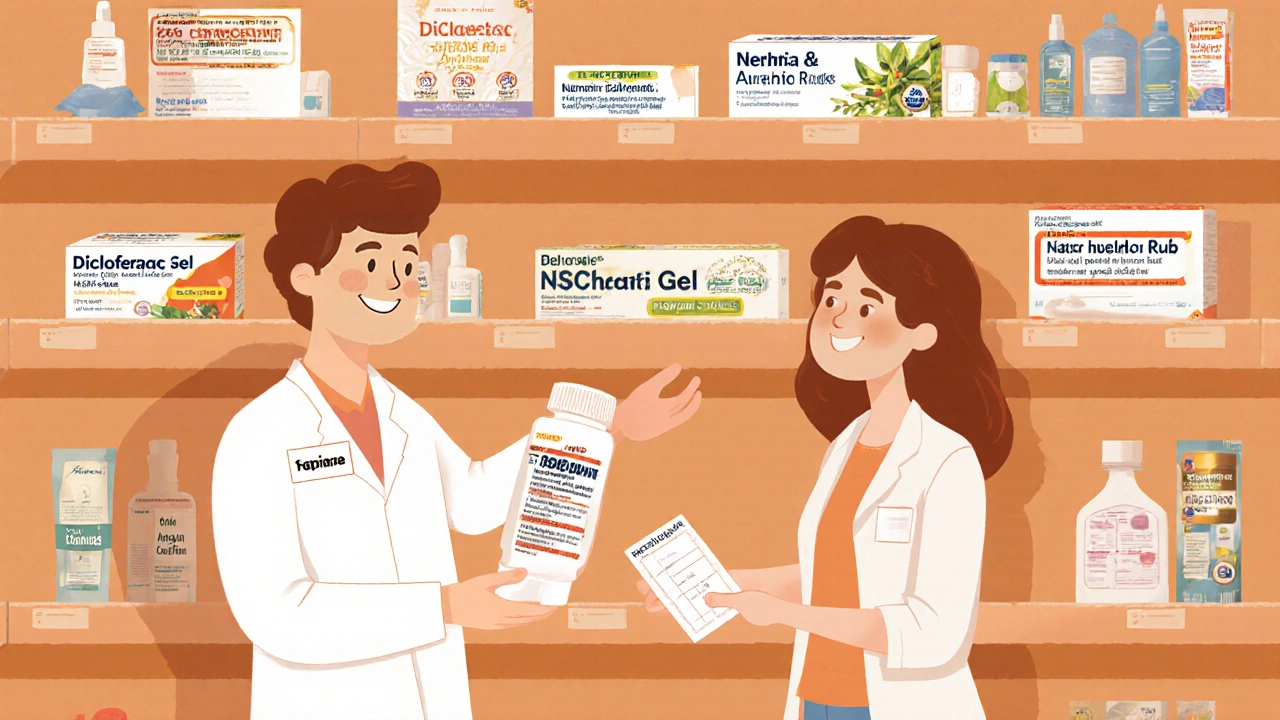
Frequently Asked Questions
Can I use Diclofenac gel together with oral NSAIDs?
Generally, doctors advise against stacking topical and oral NSAIDs because the combined dose can increase the risk of stomach ulcers and kidney strain. If you need extra pain control, discuss a short‑term switch rather than concurrent use.
How long does it take for Diclofenac gel to start working?
Most users notice a reduction in pain within 30‑45minutes, with peak effect around 2‑3hours. Consistent application for at least 5‑7days is usually needed to see full anti‑inflammatory benefits.
Is Diclofenac gel safe for people with heart disease?
Topical use carries a lower systemic load, but the TGA still lists cardiovascular caution for patients with uncontrolled hypertension or a history of heart attack. Consulting a physician before starting is prudent.
Can I apply Diclofenac gel on bruised skin?
Avoid applying to open wounds, cuts, or severely bruised areas. The gel may irritate broken skin and increase systemic absorption, which defeats the purpose of a localized treatment.
What’s the price difference between Diclofenac gel and Ibuprofen cream?
In Australian pharmacies, a 30g tube of Diclofenac gel typically costs AU$30‑45, while a comparable tube of Ibuprofen cream is around AU$20‑35. Bulk purchases or online pharmacies may offer discounts, but check for TGA‑approved sources.
Do I need a prescription for Diclofenac gel?
No, most 1% Diclofenac gels are available over the counter in Australia. However, a pharmacist may ask about existing medical conditions before you purchase.
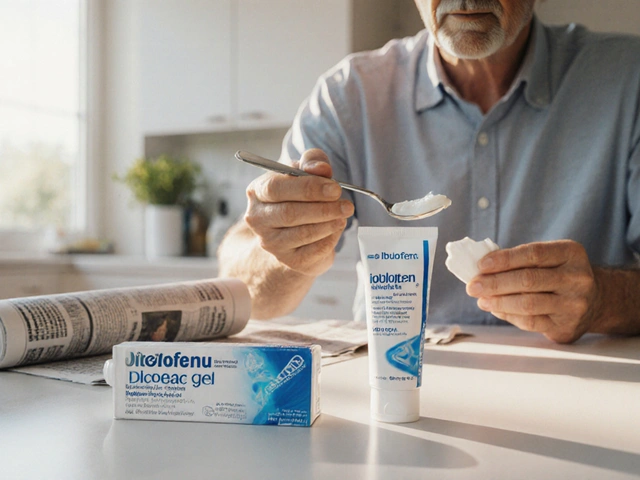

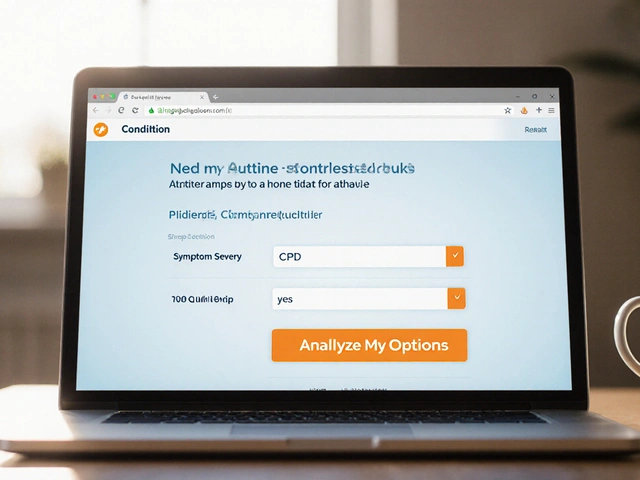

Leah Hawthorne
September 27, 2025 AT 02:52Diclofenac gel does the job for a lot of knee and elbow aches, especially when you need quick relief without swallowing pills.
Just remember to wash the area first and stick to the recommended 2‑4 g dose, otherwise you might see a rash.
It’s a solid middle‑ground between cheap ibuprofen creams and pricier lidocaine patches.
Brian Mavigliano
September 28, 2025 AT 09:42Everyone rushes to glorify Diclofenac gel like it’s the holy grail of topical NSAIDs, but that’s a romanticized myth.
The 1 % formulation barely scratches the surface of deep joint inflammation, making it a flashy placebo for many sufferers.
Meanwhile, the cheaper ibuprofen creams burrow deeper and keep your wallet happy.
Don’t be fooled by glossy ads; a gel is only as good as the vehicle that carries the drug.
In the end, you’re just trading one marketing buzzword for another.
Emily Rossiter
September 29, 2025 AT 16:33Sounds like the guide gives a clear roadmap-start with the least aggressive option and move up only if needed.
Keeping an eye on skin reactions is key; a little itching means it’s time to pause.
Good luck finding the sweet spot for your pain.
Renee van Baar
September 30, 2025 AT 23:25Pick the product that matches your pain type.
When you weigh factors like skin sensitivity, budget constraints, and the pharmacodynamic profile of each NSAID, you’ll discover that the “best” choice is a dynamic equilibrium of efficacy, tolerability, and personal circumstance, not a one‑size‑fits‑all prescription that blindly follows brand hype.
Mithun Paul
October 2, 2025 AT 06:17Upon rigorous examination of the comparative efficacy data, it becomes evident that the pharmacokinetic parameters of topical diclofenac confer a marginal advantage in inflammatory modulation relative to its analogues.
Nevertheless, the incremental benefit must be contextualized within the framework of cost‑effectiveness and patient‑reported outcomes.
Failure to consider systemic absorption thresholds may inadvertently expose high‑risk cohorts to undue cardiovascular risk.
Hence, a judicious appraisal of the therapeutic index is warranted before universal endorsement.
Sandy Martin
October 3, 2025 AT 13:08I hear you-trying a new gel can feel like a gamble, especially if you’ve had bad reactions before.
Just apply a thin layer on clean skin and watch for any lingering redness; if it definatly persists, stop using it and talk to your doc.
Take it step by step, and you’ll find a regimen that works for you.
Steve Smilie
October 4, 2025 AT 20:00The epistemological underpinnings of topical analgesic selection demand a lexicon beyond pedestrian pharmacology; one must contemplate the semiotic resonance of diclofenac’s molecular architecture within the dermal milieu.
Only through such an aesthetic appraisal can the practitioner transcend the banalities of price–performance matrices.
In this lofty vista, ibuprofen creams appear as mere prosaic footnotes, while ketoprofen ascends as a veritable sonnet of anti‑inflammatory vigor.
David Lance Saxon Jr.
October 6, 2025 AT 02:52While your skepticism adds a spicy note to the discourse, dismissing diclofenac solely on the basis of “marketing fluff” overlooks its documented COX‑2 selectivity, which is corroborated by double‑blind trials.
Moreover, the vehicle’s lipophilic enhancers facilitate dermal penetration, a factor often under‑appreciated in lay critiques.
Thus, a balanced appraisal should weigh both pharmacodynamic nuance and economic considerations rather than resorting to categorical denigration.
Moore Lauren
October 7, 2025 AT 09:43Start with a thin layer and gauge tolerance before loading up.
Jonathan Seanston
October 8, 2025 AT 16:35Hey, just a heads‑up: if you’re mixing oral NSAIDs with the gel, you might be stacking the same mechanism and upping side‑effects.
Stick to one route unless your doc says otherwise.
Nadia Stallaert
October 9, 2025 AT 23:27There’s a hidden agenda behind every “over‑the‑counter” label, and diclofenac gel is no exception; the pharma conglomerates have embedded subtle mind‑control cues into the packaging, ensuring you reach for the tube at the slightest twinge!
First, the bright blue color is a psychological trigger designed to evoke trust, while the slick marketing copy whispers promises of “rapid relief” that are nothing more than a placebo halo!
Second, the recommended dosage instructions are deliberately vague, leaving room for “over‑application” which subtly increases systemic absorption, feeding the industry’s data banks!
Third, the ever‑present warning about “consult a doctor if you have heart disease” is a smokescreen, diverting attention from the fact that even topical NSAIDs can aggravate cardiovascular risk profiles, especially in those with hidden hypertension!
Fourth, the cost premium ($30‑45) is a calculated move to siphon money from unsuspecting consumers, while cheaper ibuprofen creams are quietly pushed to the back shelves!
Fifth, the “clinically proven” claims are often based on underpowered studies funded by the very manufacturers that stand to profit, a classic conflict‑of‑interest loop!
Sixth, the ubiquitous “no prescription needed” badge fuels a false sense of safety, encouraging self‑medication among vulnerable populations, a demographic the industry has long targeted!
Seventh, the playing field is further skewed by the fact that many insurance plans refuse to cover these gels, forcing patients to purchase out‑of‑pocket, thereby inflating profit margins!
Eighth, the subtle inclusion of “propylene glycol” as a solvent is not just for skin permeation-it also acts as a mild irritant, ensuring that users experience a tingling sensation that they misinterpret as therapeutic action!
Ninth, the intermittent “real‑world evidence” that appears in glossy brochures is often cherry‑picked anecdotal data, ignoring the thousands of adverse event reports hidden in confidential databases!
Tenth, the cascade of online reviews-many of which are suspiciously generic-are likely fabricated by marketing bots, creating an illusion of widespread satisfaction!
Eleventh, the strategic placement of the product at eye‑level in pharmacies leverages the “availability heuristic,” making you think it’s the default choice!
Twelfth, the glossy imagery of athletes in motion is a subliminal suggestion that the gel will restore your performance, a promise that the chemistry of a 1 % NSAID simply cannot fulfill!
Thirteenth, the legal disclaimer about “rare but serious side effects” is a clever tactic that satisfies regulatory bodies while downplaying the actual incidence rates!
Fourteenth, the subtle encouragement to “continue use for up to 2‑3 weeks” is a marketing ploy to lock you into a habit, ensuring recurring sales!
Fifteenth, the whole narrative is orchestrated to divert your attention from lifestyle interventions-exercise, weight loss, physiotherapy-that would render any topical agent unnecessary!
Finally, the ultimate goal is not pain relief but market domination, and the veneer of scientific credibility is merely the frosting on a very profitable cake!
Greg RipKid
October 11, 2025 AT 06:18Topicals are great for spot treatment, but don’t rely on them as your sole pain strategy; combine with movement and proper posture for lasting results.
Also, keep an eye on the total daily amount to avoid systemic buildup.
John Price Hannah
October 12, 2025 AT 13:10Oh, the agony of a rash that flares like a volcano, a reminder that even “miracle gels” can betray the unsuspecting!
Step back, reassess, and let the skin breathe before you plunge back into the battle.
Echo Rosales
October 13, 2025 AT 20:02Honestly, the whole “topical vs oral” hype is overblown; most people feel fine switching to a simple cold compress.
Elle McNair
October 15, 2025 AT 02:53In the end, the best choice aligns with what feels right for your body and budget, so experiment responsibly and share what works for you.
Community feedback helps everyone navigate the maze of options.